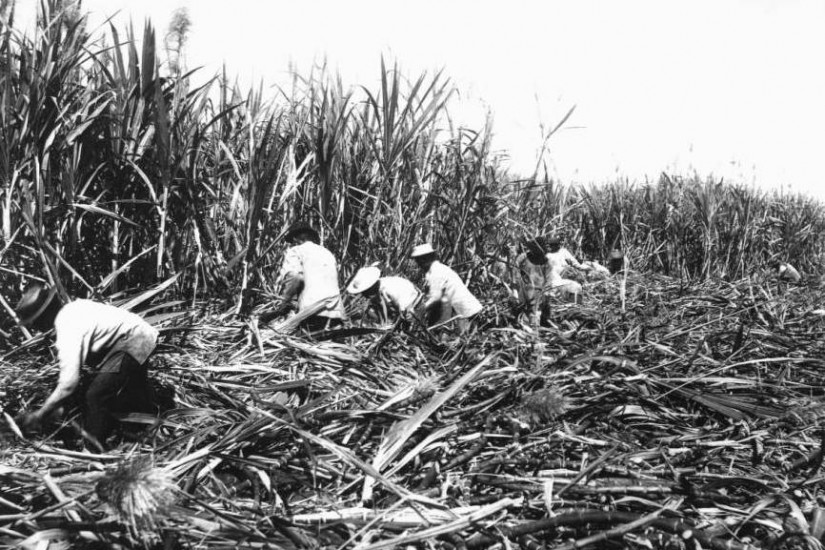Last December, Hawaii’s last remaining sugar mill suspended operations. Speaking at a ceremony marking Hawai’i Commercial & Sugar Co.’s final haul, Chris Benjamin, president and CEO of the plantation’s parent company, waxed poetic about sugarcane’s role in the making of modern Hawaii:
"Rarely has an industry so shaped and influenced a place and helped create a culture, a fabulous multi-ethnic culture, as the sugar industry did. The harmonious melting pot we enjoy in Hawai’i is a perfect counter to the divisiveness and isolationism that sadly much of the country is embracing."
Benjamin was only half right. While it’s difficult to overstate the sugar industry’s power, the idea that it ushered in a “harmonious melting pot” obscures Hawaii’s true history, which consists of capitalist conspiracies, worker uprisings, and one ill-conceived attempt to contrive a whiter working class, all set against the backdrop of ongoing Native Hawaiian resistance.
In the mid-nineteenth century, the sugar industry capitalized on conflict and colonization: haole (white) owners built plantations on dispossessed Native Hawaiian land, and mainland sugar gluts resulting from the Civil War, as well as the westward encroachment of white settlers during the California Gold Rush, contributed to their success.
The ensuing decades of industrialization, relaxed export taxation, annexation, and, later, territory status, made sugar increasingly profitable. By 1870, five major plantations had consolidated their power. Gary Okihiro, author of a seminal text on Hawaii’s sugarcane history, has noted that this cohort of producers — known as the Big Five — held enormous political and economic sway over the island for the better part of a century.
Workers often rose up against their bosses, demanding better wages and conditions. Japanese and Filipino immigrants staged strikes that ultimately won fair pay and shorter hours. But the laborers struggled to break their bosses’ control. Finally, they formed an alliance with white dockworkers, shutting down the industry from production to distribution.
The story of worker resistance on Hawaii’s sugar plantations not only gives us insight into the state’s history but reminds us of the importance of building worker struggles across ethnic, racial, and national divides.
